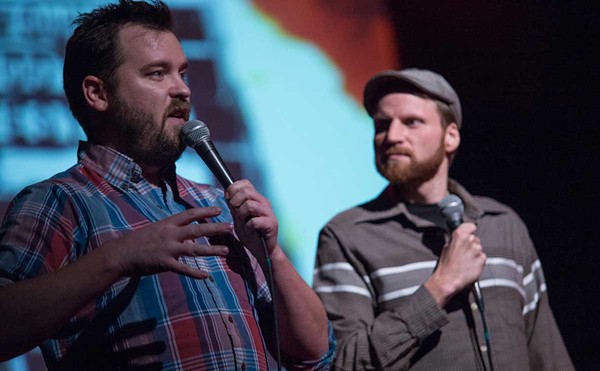It's a long way from Santa Cruz, Calif., to the Briggs neighborhood, now known as North Corktown, near Tiger Stadium, a mile from downtown Detroit. In the early 1990s, John Hartigan Jr. was living near the stadium, conducting field research as he worked toward a doctorate in anthropology.
Hartigan wasn't a tourist; he knew Detroit. He'd grown up around Livernois and Seven Mile, and later received his undergraduate degree from the University of Michigan. But grad school took him to the University of California during a time of major upheaval in the social sciences. Scholars were shifting their approach to the study of race and community, for the first time questioning the assumption of cultural normalcy associated with whiteness and second-guessing methods that allowed white scholars to approach race studies as if they were impartial observers who didn't factor in the color of their own skin.
"I realized immediately that the questions we were asking about our assumptions concerning 'race' as a concept, questions about our whole approach to the field, were very important," says Hartigan, now associate professor of anthropology at the University of Texas, Austin. "But I also saw that most of my white colleagues were only coming into some kind of consciousness about 'whiteness' now, in their 20s. And growing up in Detroit, a city with an 82 percent black population, I knew that whites there generally recognize and were probably more reflective about these issues a lot earlier than that. So I designed my fieldwork by framing broad theoretical questions about how whites actually make sense of race, with three distinct 'class areas' in Detroit providing the geographical context."
As he lived and worked in two inner city neighborhoods (one underclass, the other gentrifying) and one working-class neighborhood, Hartigan went looking for a consistent "racial identification" process among whites of different economic classes. What he found instead was an uneasy individual negotiation of white identity that was inconsistent across class lines.
Hartigan's field research conducted in Briggs, Corktown and Warrendale produced the local content for his first book Racial Situations: Class Predicaments of Whiteness in Detroit, published in 1999. And though broader and more ambitious, his second book, Odd Tribes: Toward a Cultural Analysis of White People, newly published by Duke University Press, remains rooted in observations on race and class in white people's lives. He takes on history, anthropology and sociology and cultural studies, considering, for example, the origins of the phrase "white trash," which he traces back to the pre-Civil War era. In this second book, Hartigan still shines a spotlight on Detroit, in a chapter entitled "Locating White Detroit."
"I got into graduate school during the first round of study on 'whiteness' and 'otherness,' that critical re-evaluation of a whole area of cultural study," Hartigan says. "Basically, white scholars were rethinking the ways in which whiteness got talked about. I stumbled on this notion of 'white trash' in a class on primitivism and primitive cultures, and I noticed that all the terms that were applied to 'primitive' culture in the literature applied to poor whites as well — only instead of being strange and exotic, the context was rural and incestuous. So I got hold of all this postcolonial critical theory and started trying to use it to make sense of the way words like 'redneck,' 'hillbilly,' and 'white trash' are used in everyday life."
Though it derives in many places from Hartigan's Detroit research, Odd Tribes aspires to be a work of sweeping cultural criticism; it's part pop culture study, part anthropological thesis, and part historical survey — in sum, an overarching investigation into the various process by which white people mark themselves, and are marked by others. Odd Tribes thus challenges a major strain of contemporary cultural theory that assumes the primary truth about white people is that they generally occupy a racially "unmarked" position in questions of cultural identity. While this may be true from a certain perspective, Hartigan argues, such a view misses a rich investigation of how white people conceive of race and construct identities for themselves.
The conclusions Hartigan draws about "whiteness" as a racial and cultural phenomenon run against a vast and well-established body of theory presenting whiteness as an invariable marker of privilege, at once outwardly oppressive and internally consistent. That assumption, Hartigan argues, is problematic for two primary reasons: First, it posits a thoroughly imaginary sense of "white solidarity," a cohesive cultural identity to which all whites have equal, uncomplicated access. Second, it ignores the evidence provided by intra-racial prejudices, held by whites about other whites, which reveals a strong link between race and economics.
"I'm most interested in the class dimensions of race," Hartigan says. "People frequently say that Americans aren't comfortable talking about race, but in contemporary life we actually do a pretty good job of it. By the time young people get to college, they're very well-versed in the vocabulary of race, and they know all the basic intellectual 'moves,' so to speak, they know how to talk when race is an important part of a conversation. They're very adept at it. Where we're a lot less comfortable is in talking about class, and in particular the bodily indicators of class, the outward markers that people learn they have to control in order to be accepted, to belong socially."
A brief but illuminating chapter in Odd Tribes considers John Boorman's 1972 film Deliverance, deftly illustrating Hartigan's observations on the "bodily indicators" of class. More than 30 years since its release, Deliverance has become widely known for its depiction of rural white people — so much that the opening riff of the song "Dueling Banjos," from the film's soundtrack, has become a cross-racial pop culture reference of its own. Hartigan examines the representation of intra-racial tensions in Deliverance — civilization vs. primitivism, sexual dominance vs. submission — and considers how the director uses visual cues in order to signal basic class differences between white people.
"Teeth, shoes, posture ... teeth, in particular," Hartigans says, laughing a little. "When I talk about teeth in my classes, you can see hands going up to cover mouths all over the room. But it's so important to recognize that those elements are reflective of status. They're indicators of class, our obsession with it and our inability to recognize it and refer to it in social terms. They're reminders of how the failure to control the body marks us. Now, some of these signs associated with 'white trash' are pretty mobile; Eminem, Roseanne Barr, certain punk groups can pick up these indicators and play with them, perform them. But there's a much deeper level that goes past being able to 'put on' these signs, and that's probably where people encounter their most intense experiences of shame associated with them."
Though pitched toward fellow scholars, there's a lot in Odd Tribes that will appeal to readers interested in general discussions of race and American social life. It's a good read for Detroiters interested in how a white minority manifests itself as a cultural anomaly and those wondering how urban demographics are tending in the early 21st century.
"I get asked that question a lot," Hartigan concedes: "whether Detroit's demographics are too exceptional to allow me to draw the larger conclusions that I do. But actually, in surveying other geographies with similar dynamics — Toronto, Oakland, or New York, for example — I think Detroit foreshadows certain demographic shifts and trends in other places. The city is actually in the forefront, from that perspective."
Eric Waggoner writes about books for Metro Times. Send comments to [email protected].





